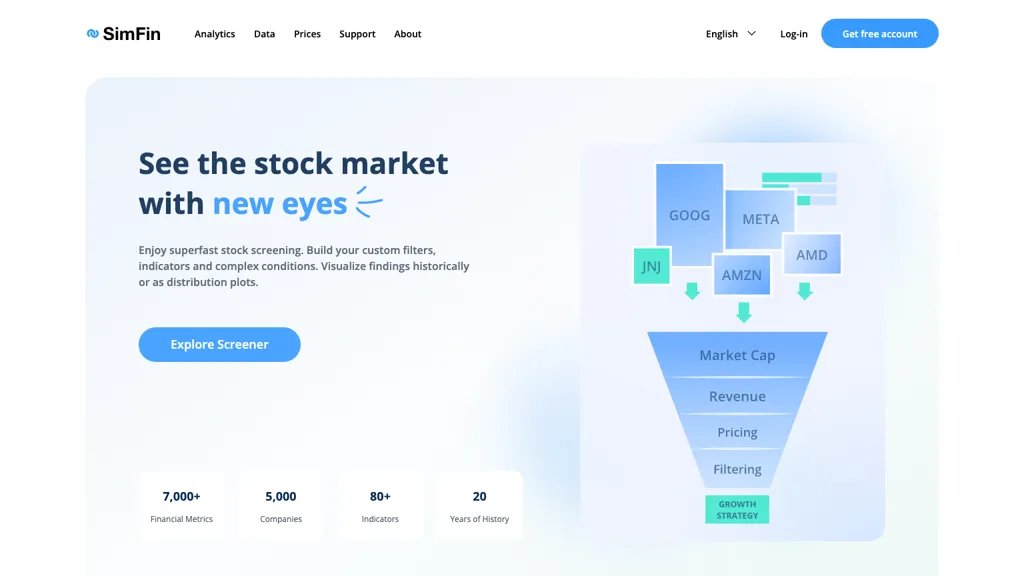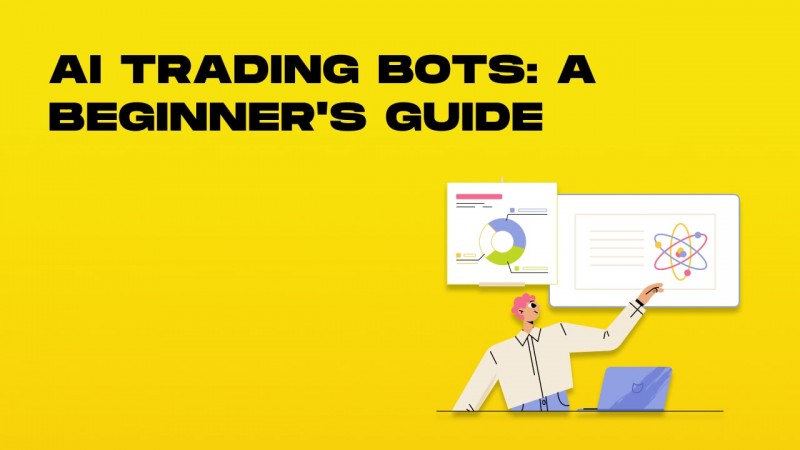20 Excellent Reasons For Choosing AI Stock Predictions Analysis Sites
20 Excellent Reasons For Choosing AI Stock Predictions Analysis Sites
Blog Article
Top 10 Tips To Evaluate The Market Coverage Provided By Ai-Based Stock Prediction/Analysis Platforms
Market coverage is one of the most crucial factors to consider when evaluating AI-powered trading platforms. It determines the number of assets and markets are accessible. Market coverage is crucial as it lets you diversify, discover the world's markets, and adjust different trading strategies. Here are 10 suggestions to help you analyze the market coverage offered by these platforms.
1. Evaluate Supported Asset Classes
Stocks - Ensure you are connected to major stock exchanges like NYSE and NASDAQ. Additionally, make sure that your platform offers small-caps as well as mid-caps.
ETFs. Make sure the platform provides a range of ETFs so you can get diversified exposure.
Options and futures. See whether your platform has derivatives, such as options, futures or any other leveraged instrument.
Commodities and Forex. Check to see whether there are any forex pairings that are available, in addition to precious metals, energy-related commodities, and agricultural commodities.
Cryptocurrencies: Verify if the platform works with major cryptocurrencies such as Bitcoin and Ethereum and other currencies.
2. Make sure you check the area of coverage
Global markets - Check that the platform is able to serve every major market around the globe, including North America (including copyright), Europe, Asia-Pacific markets, and emerging ones.
Regional focus: Find out whether your platform has a distinct focus on a region or market that matches with your trading requirements.
Local exchanges. Find out if the platform allows exchanges local or regional for your area.
3. Assessment Real-time as opposed to. Delayed data
Real-time Market Data: The platform needs to offer real-time trading information that allows for quick decision-making.
Delayed data: Check if delayed data is available at no cost or at a cheaper cost, which could be sufficient for long-term investors.
Data latency. Examine how your platform can reduce the amount of latency for real-time feeds.
4. Review the availability of historical data
Depth of historical data If the platform is available, ensure that it has extensive historical data (e.g. 10, 10+ years) to backtest and analyze.
Find out the precision in historical data.
Corporate actions: Check for evidence that data was recorded prior to. Dividends or stock splits any other corporate actions must be included.
5. Check the Market Depth and Place an Order Books
Data Level 2: Make sure the platform offers Level 2 (order book depth), for better price discovery.
Bid-ask Spreads: Ensure that the platform displays real-time spreads for bid and request for the most exact pricing.
Volume data: Check if your platform offers detailed volume data to analyze liquidity and market activity.
6. Check the extent of coverage for Indices and Sectors
Major indices: Make sure the platform is able to handle major indices (e.g., S&P 500, NASDAQ 100, FTSE 100) for benchmarking and index-based strategies.
Data from specific sectors for targeted analysis, you should determine if the platform has information for specific industries (e.g. health care, technology, etc.).
Customized indexes. Check if you can build or track custom indices based on your own criteria.
7. Examine the integration with Sentiment Data and News
News feeds - Ensure that the platform is integrating real-time news feeds for market-moving stories from reputable (e.g. Bloomberg or Reuters) sources.
Sentiment analysis: Check whether the platform has sentiment analysis tools that are based on news media, social media, or other data sources.
Event-driven Strategies: Check if the platform can support strategies that are triggered by events (e.g. economic reports and earnings announcements).
8. Check for Multi-Market Trading Capabilities
Cross-market trade: Check that the platform permits trading across asset and market categories through a single interface.
Currency conversion: Check if your platform supports multi-currency trading and automated currency conversion.
Support for time zones: Check whether the trading platform is compatible with various time zones for global markets.
9. Assessment of Alternative Data sources
Alternate data sources: To get unique insights, check if the platform incorporates alternative sources of data.
ESG data: Check whether the platform is equipped with environmental governance, social and (ESG) information to help investors make socially responsible decisions.
Macroeconomics data: For fundamental analysis, ensure the platform has macroeconomic indicators like GDP (gross domestic product), inflation rates and interest rates.
Check the User Feedback and Market Reputation
User reviews: Research user feedback to gauge the coverage of the platform's market and quality of service.
Industry reputation: See whether the platform is regarded as a market leader by industry experts or has received awards.
Case studies: Search for case studies or testimonials which highlight the platform's performance in certain areas or asset classes.
Bonus Tips
Trial period: Try an unpaid trial or demo to test the market coverage and data quality.
API access - Determine if the API is able to gain access to data from the market programmatically.
Support for customers: Ensure that the platform provides support for market-related queries or data-related issues.
With these suggestions, it is possible to be able to accurately evaluate the coverage of AI stock prediction/analyzing trading platform. You can then choose an investment platform that provides you the markets and the data you require for successful trades. You can diversify your portfolio and make the most of new opportunities using a extensive market coverage. View the best ai stock picker info for website examples including best ai for trading, trading ai, ai trading tools, options ai, investment ai, chatgpt copyright, market ai, ai investing platform, best ai stock, best ai stock and more.
Top 10 Ways To Evaluate The Scalability Ai Stock Predicting/Analyzing Trading Platforms
It is important to assess the scalability and performance of AI-driven stock prediction and trading platforms. This will guarantee that they're able to cope with the increasing volume of data, market complexity, and demands from users. These are the top 10 suggestions to determine scalability
1. Evaluate Data Handling Capacity
Tip: Make sure the platform you are considering can process and analyze large datasets.
Why? Scalable platforms should be able to handle the growing amounts of data with no degradation.
2. Test the Real-Time Processing Capabilities of your processor
See if your platform can handle streaming data in real time such as live stock quotes, or breaking news.
Why: The real-time analysis of trading decisions is vital, as delays can lead to you missing out on opportunities.
3. Cloud Infrastructure Elasticity and Check
Tip: Find out whether the platform has the ability to dynamically scale resources and utilizes cloud infrastructure (e.g. AWS Cloud, Google Cloud, Azure).
Why? Cloud platforms allow flexibility. The system can scale up or down in accordance with the need.
4. Algorithm Efficiency
Tip: Evaluate the computational efficacy of AI models (e.g., deep learning and reinforcement learning, etc.)) used for predictions.
Why: Complex algorithms consume a lot of energy. Therefore optimizing them can assist you in scaling.
5. Learn more about Parallel Processing and Distributed Computer Systems
Tip: Check if the platform uses parallel processing or distributed computing frameworks (e.g., Apache Spark, Hadoop).
The reason: These technologies allow more efficient data processing and analysis across many nodes.
Review API Integration and Interoperability
TIP: Examine the platform's integration with external APIs.
Why? Because the platform is able to adjust to the changing requirements of markets and sources of data thanks to seamless integration.
7. Analyze User Load Handling
Try simulating high traffic levels to test how your platform will perform.
Why: A platform that is scalable should be able to sustain its performance as the number of users increase.
8. Analyze the model retraining and the model's adaptability
Tip: Evaluate how frequently and efficiently AI models are retrained with new data.
Why: As markets change and models are updated, they must be updated frequently to stay accurate.
9. Verify fault tolerance and redundancy
TIP: Ensure your platform has failover mechanisms to deal with hardware or software failures.
Why Trading is expensive Therefore scaling and fault tolerance are essential.
10. Monitor Cost Efficiency
Tip: Analyze the cost of expanding the platform, such as cloud resources, data storage and computing power.
Why: Scalability should not be a burden that is unsustainable which is why balancing performance with expense is essential.
Bonus tip: Future-proofing
Ensure the platform is designed to incorporate emerging technologies (e.g., quantum computing or advanced NLP) and to adapt to changes in the regulatory environment.
If you concentrate your focus on these factors and focusing on these factors, you can evaluate the scale of AI prediction and trading platforms. This ensures that they are durable, efficient, and ready for further expansion. View the recommended best stock prediction website blog for site info including investing with ai, ai stock predictions, chart analysis ai, ai stock trader, ai stock trader, ai in stock market, free ai tool for stock market india, ai stock predictions, ai stock investing, best ai stocks and more.